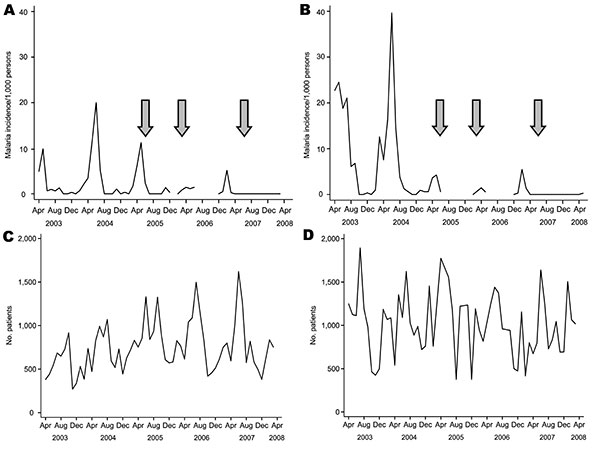Volume 15, Number 12—December 2009
Research
Possible Interruption of Malaria Transmission, Highland Kenya, 2007–2008
Figure 1

Figure 1. Malaria incidence and number of patients seen at health dispensaries in 2 highland areas of western Kenya, April 2003–March 2008. A) Monthly incidence of malaria/1,000 persons in Kipsamoite. B) Monthly incidence of malaria/1,000 persons in Kapsisiywa. C) No. patients who came to the Kipsamoite health dispensary. D) No. patients who came to the Kapsisiywa health dispensary. Gaps in panels A and B indicate that no data were collected during these periods. Arrows indicate when indoor residual spraying was conducted in the 2 areas.
Page created: December 09, 2010
Page updated: December 09, 2010
Page reviewed: December 09, 2010
The conclusions, findings, and opinions expressed by authors contributing to this journal do not necessarily reflect the official position of the U.S. Department of Health and Human Services, the Public Health Service, the Centers for Disease Control and Prevention, or the authors' affiliated institutions. Use of trade names is for identification only and does not imply endorsement by any of the groups named above.